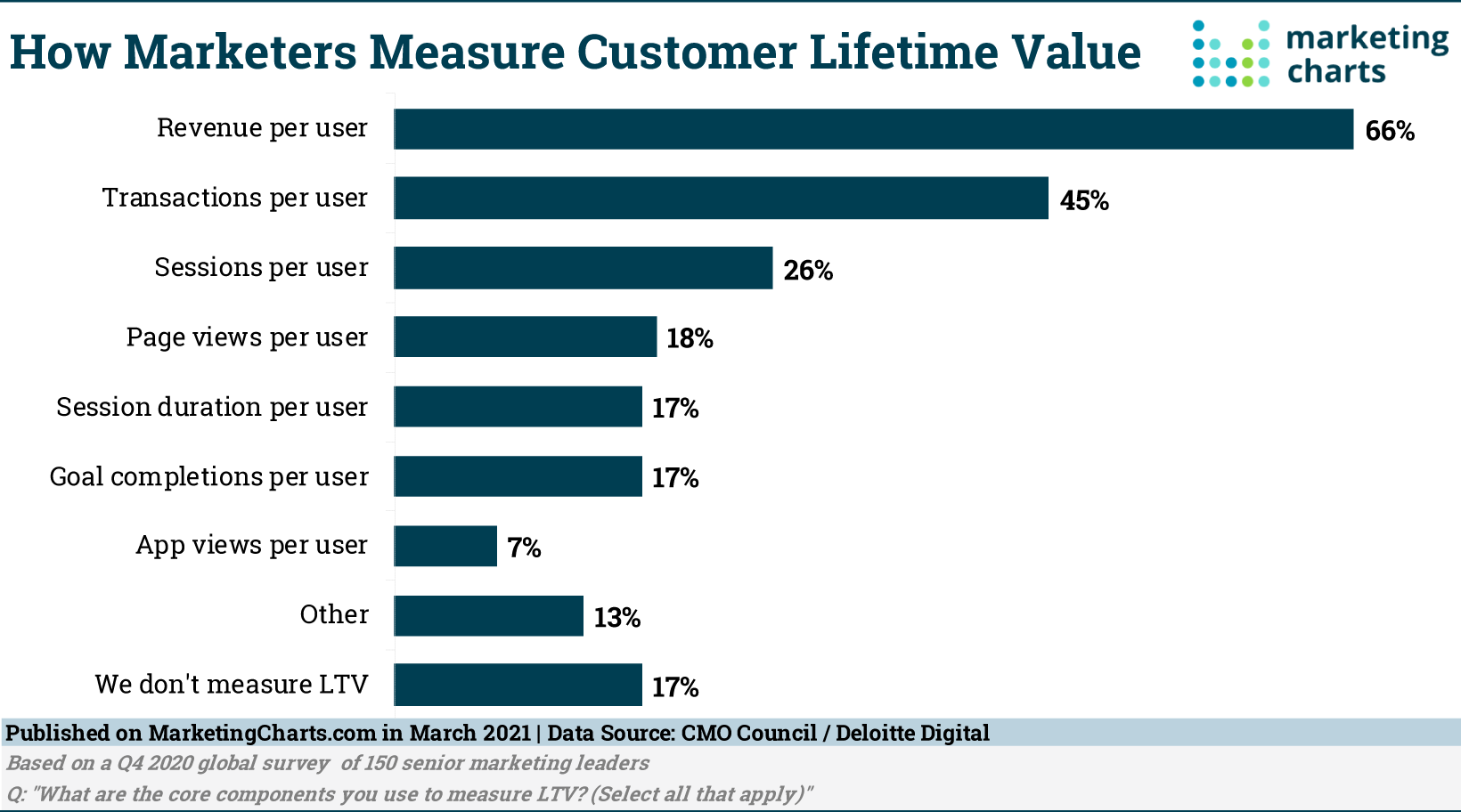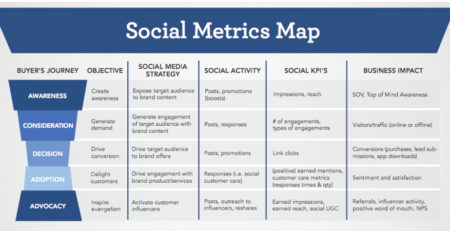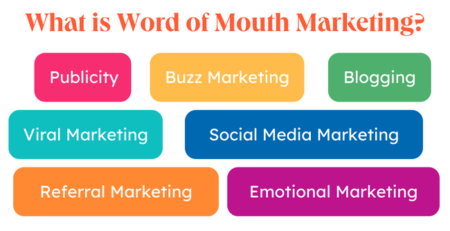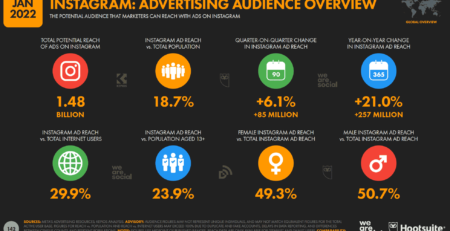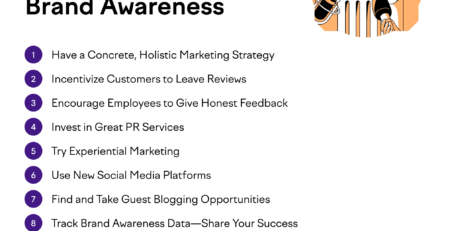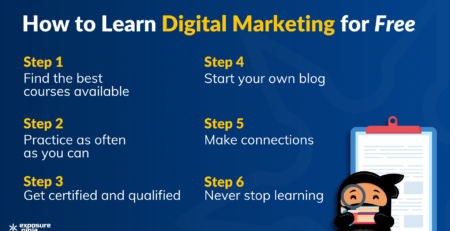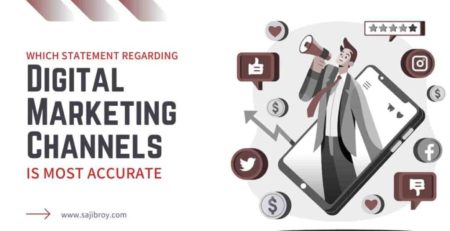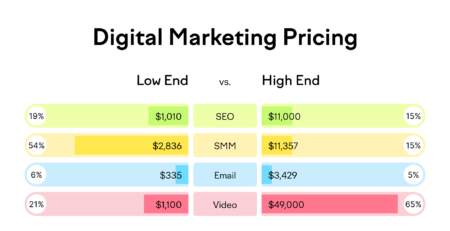What Can Digital Marketers Measure By Using Customer Lifetime Value?
Do you know what digital marketers can measure by using customer lifetime value? It’s a fascinating concept that allows marketers to gain deep insights into their customers’ long-term value. In this article, we’ll explore the exciting world of customer lifetime value and discover how it can revolutionize marketing strategies.
Imagine being able to predict how much revenue a customer will generate during their entire relationship with a business. That’s exactly what customer lifetime value enables digital marketers to do. By analyzing past customer behavior and purchase history, marketers can evaluate the profitability of their customer base and make data-driven decisions.
Customer lifetime value goes beyond simple transactional metrics like the cost of acquiring a customer. It takes into account factors such as repeat purchases, upsells, referrals, and even customer loyalty. This comprehensive approach empowers marketers to optimize their marketing efforts, enhance customer experiences, and drive long-term business growth.
Get ready to uncover the secrets behind customer lifetime value and its impact on digital marketing strategies. Whether you’re a seasoned marketer or just starting out, understanding how to measure customer lifetime value will give you a significant advantage in today’s competitive business landscape. So, let’s dive in and discover the endless possibilities that await!
The Importance of Customer Lifetime Value in Digital Marketing
Understanding the customer lifetime value (CLV) is vital for digital marketers aiming to create effective marketing strategies and maximize their return on investment. CLV is a metric that calculates the total revenue generated from a customer throughout their entire relationship with a business. By analyzing the CLV, marketers can gain valuable insights into customer behavior, loyalty, and overall profitability. In this article, we will explore the various aspects that digital marketers can measure using customer lifetime value, and how it can impact their marketing efforts.
Measuring Customer Acquisition Costs through CLV
Customer acquisition costs (CAC) play a crucial role in determining the overall profitability of a marketing campaign. By using CLV, digital marketers can effectively measure their CAC and evaluate the success of their customer acquisition efforts. CLV enables marketers to track the amount of money they spend to acquire customers and compare it to the value those customers generate over their lifetime. This information is invaluable for optimizing marketing campaigns and allocating budgets to attract the most valuable customers.
Benefits of Measuring CAC through CLV
There are several benefits that digital marketers can gain by measuring their customer acquisition costs through customer lifetime value:
- Efficient Budget Allocation: By understanding the CAC, marketers can allocate their budgets more efficiently, focusing on channels and strategies that yield higher returns.
- Improving Return on Investment: CLV allows marketers to identify the most profitable customers and develop strategies to nurture and retain them, resulting in increased customer loyalty and higher ROI.
- Optimizing Marketing Campaigns: By monitoring the CAC, marketers can identify underperforming campaigns and make the necessary adjustments to improve efficiency and effectiveness.
- Data-Driven Decision Making: CLV provides marketers with valuable data to make informed decisions about marketing strategies, customer segmentation, and targeting.
Measuring Customer Loyalty and Repeat Purchases
Customer loyalty is a crucial factor in the success of any business, and measuring it accurately is vital. CLV helps digital marketers determine the level of customer loyalty by tracking their repeat purchases. By analyzing the purchasing patterns and behavior of customers, marketers can identify those who are more likely to make repeat purchases and become loyal advocates for the brand.
Customer Segmentation based on CLV
Segmenting customers based on their CLV allows digital marketers to tailor their marketing efforts and strategies to different customer groups. By identifying high-value customers, marketers can design personalized campaigns, loyalty programs, and offers that cater specifically to their needs and preferences. On the other hand, customers with a lower CLV can be targeted with different tactics aimed at increasing their loyalty and value over time.
Maximizing CLV with Effective Retention Strategies
Another significant aspect that digital marketers can measure using CLV is the impact of retention strategies on maximizing the lifetime value of customers. By implementing effective retention programs, such as personalized communications, loyalty rewards, and exceptional customer service, businesses can foster long-term relationships with their customers. Higher customer retention rates lead to increased CLV, which, in turn, results in higher profitability and long-term success.
Benefits of Maximizing CLV through Retention Strategies
By utilizing CLV to implement effective retention strategies, digital marketers can enjoy several benefits:
- Enhanced Customer Relationships: Implementing personalized retention strategies can strengthen the relationship between the brand and the customer, resulting in increased loyalty and satisfaction.
- Increased Customer Lifetime Value: Retaining customers for a longer period leads to higher CLV, as customers continue to generate revenue throughout their relationship with the business.
- Positive Word-of-Mouth and Brand Advocacy: Loyal customers are more likely to recommend the brand to friends and family, contributing to positive word-of-mouth marketing and brand advocacy.
- Reduced Marketing Costs: By focusing on retention rather than acquisition, marketers can reduce marketing costs, as it is more cost-effective to retain existing customers compared to acquiring new ones.
Optimizing Marketing Campaigns with CLV
An additional benefit of measuring customer lifetime value in digital marketing is the ability to optimize marketing campaigns. By analyzing the CLV of customers acquired through different marketing channels, marketers can identify the most cost-effective and profitable channels and allocate their resources accordingly.
Segmenting Customers Based on Acquisition Channels
Segmenting customers based on the acquisition channels they were acquired from allows digital marketers to personalize their marketing efforts within each channel. By understanding which channels are attracting high-value customers, marketers can refine their messaging, targeting, and promotions to appeal to those specific customer segments.
Testing and Iterating Marketing Strategies
Using CLV as a benchmark, marketers can experiment with different marketing strategies and tactics to optimize performance. By tracking changes in customer lifetime value before and after implementing new strategies, marketers can measure the effectiveness of their efforts and make data-driven decisions about future marketing campaigns.
Benefits of Optimizing Marketing Campaigns with CLV
Optimizing marketing campaigns with customer lifetime value offers several advantages:
- Cost-Efficiency: By identifying and focusing on the most profitable channels and customer segments, marketers can achieve a higher return on investment and reduce wasted advertising spend.
- Improved Customer Targeting: Understanding which marketing channels attract high-value customers allows marketers to refine their targeting and tailor their messaging to engage those specific audiences.
- Enhanced Marketing Strategy: By continuously measuring and analyzing CLV, marketers can evolve their strategies, improve customer retention, and drive long-term growth.
- Data-Driven Decision Making: Analyzing the impact of different marketing campaigns on CLV enables marketers to make informed decisions and allocate resources effectively.
Conclusion
Measuring customer lifetime value provides valuable insights for digital marketers to optimize their marketing efforts, allocate budgets efficiently, and achieve higher returns on investment. By understanding the various aspects that CLV can measure, such as customer acquisition costs, loyalty, retention strategies, and the optimization of marketing campaigns, marketers can make informed decisions and drive long-term growth for their businesses. Implementing effective CLV strategies is crucial for businesses looking to thrive in an increasingly competitive digital landscape.
#Additional H2 Headings:
Utilizing CLV for Personalization
Personalization plays a significant role in enhancing the customer experience and maximizing customer lifetime value. By leveraging CLV data, digital marketers can create personalized marketing campaigns, tailored content, and targeted offers that resonate with individual customers. Let’s explore how CLV can drive personalization efforts for digital marketers.
Benefits of Personalization through CLV
Integrating CLV into personalization efforts offers numerous benefits for digital marketers:
Measuring CLV for Long-Term Revenue Predictions
By analyzing historical data and customer behavior, digital marketers can use CLV to predict long-term revenue projections. This allows marketers to make informed decisions about business expansion, resource allocation, and forecasting future growth.
#Extended H2 Headings:
Enhancing Customer Satisfaction with CLV
Customer satisfaction is crucial for building long-term relationships and encouraging repeat purchases. By leveraging customer lifetime value, digital marketers can identify pain points in the customer journey and implement strategies to improve overall satisfaction.
Driving Customer Referrals with CLV
CLV can also help digital marketers identify potential brand advocates and encourage customer referrals. By targeting customers with a high CLV, marketers can leverage their loyalty to generate positive word-of-mouth, leading to increased brand awareness and new customer acquisition.
Optimizing CLV with Retargeting
Retargeting campaigns can play a significant role in increasing customer lifetime value. By leveraging CLV data, digital marketers can identify customers with a higher propensity to make repeat purchases and strategically retarget them with relevant ads and promotions.
Key Takeaways: What Can Digital Marketers Measure by Using Customer Lifetime Value?
- With customer lifetime value, digital marketers can measure the total revenue generated by a customer throughout their relationship with a business.
- They can also analyze the profitability of different customer segments and make data-driven decisions for marketing strategies.
- Customer lifetime value helps in identifying customers with higher potential for upselling and cross-selling, leading to increased revenue.
- Digital marketers can use customer lifetime value to gauge customer loyalty and identify areas where customer retention can be improved.
- This metric allows marketers to evaluate the effectiveness of marketing campaigns and track the ROI of customer acquisition efforts.
**
Frequently Asked Questions
**
**What can digital marketers learn by using Customer Lifetime Value?**
Digital marketers can measure Customer Lifetime Value (CLV) to gain insights into the long-term value of their customers. By analyzing CLV, marketers can understand how much revenue each customer can bring to the business over their entire relationship. This enables marketers to make data-driven decisions, such as allocating resources, setting sales targets, and determining marketing budgets.
**How does CLV help in customer segmentation?**
CLV plays a key role in customer segmentation. Marketers can divide customers into different segments based on their CLV. This enables them to identify their most valuable customers, who can then be targeted for personalized marketing efforts. Additionally, customers with low CLV can be targeted with retention strategies to increase their value over time.
**How does CLV assist in predicting future purchases?**
Analyzing CLV can help digital marketers predict future purchases by identifying patterns and trends. By studying a customer’s buying habits and lifetime value, marketers can determine their likelihood of making future purchases. This information can be used to develop targeted marketing campaigns and offers that are more likely to resonate with the customer and drive repeat purchases.
**Can CLV help in measuring customer loyalty?**
Yes, CLV is an excellent metric to measure customer loyalty. Customers who have a high CLV are more likely to be loyal to a brand and make repeat purchases. By tracking CLV over time, marketers can assess the impact of loyalty programs, customer service initiatives, and marketing efforts on customer retention rates and overall loyalty.
**How does CLV contribute to business profitability?**
CLV directly contributes to business profitability by helping marketers identify high-value customers and focus their efforts on retaining and upselling to those customers. By understanding the long-term value of each customer, marketers can optimize their marketing strategies to maximize revenue and profitability. With this knowledge, they can allocate resources effectively and invest in initiatives that drive customer satisfaction and loyalty, ultimately leading to increased profits.
Summary
So, digital marketers can use Customer Lifetime Value (CLV) to measure how much money they’ll make from each customer. By using CLV, they can understand which customers are most valuable and focus on keeping them happy. CLV helps marketers make smart decisions and maximize their profits.

